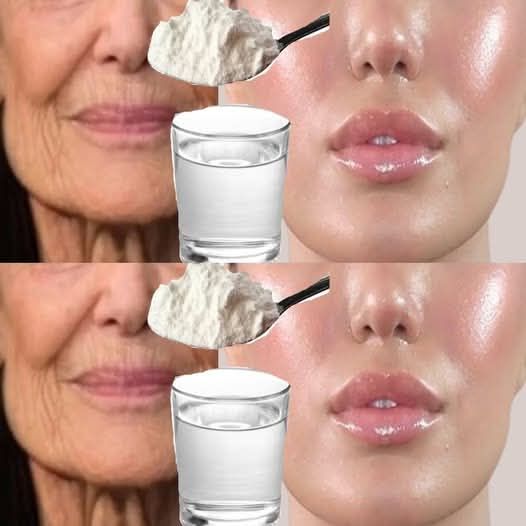Hey there, skincare enthusiasts! Are you searching for a budget-friendly way to achieve a more youthful and radiant complexion? You might be surprised to learn that a simple combination of baking soda and water could be your secret weapon. Let’s dive into the buzz around using baking soda as a natural face lift alternative, explore its potential benefits, and discuss how to use it safely and effectively.
The Baking Soda Face Lift: Fact or Fiction?

The concept of a “baking soda face lift” has gained traction online, promising to reduce wrinkles and tighten skin naturally. But does it live up to the hype? Baking soda, or sodium bicarbonate, is known for its exfoliating and pH-balancing properties. Proponents suggest it can slough off dead skin cells, potentially revealing smoother, brighter skin underneath. While it’s not a surgical face lift in a jar, it can offer some visible improvements when used cautiously. Think of it more as a deep cleanse and exfoliation treatment rather than a permanent fix.
What Baking Soda Actually Does for Your Skin

- Exfoliation: Baking soda’s abrasive texture helps remove dead skin cells, promoting cell turnover and a brighter complexion.
- pH Balancing: Baking soda is alkaline, and while our skin is slightly acidic, some believe it can help neutralize excess oil and impurities that can contribute to acne and dullness. However, be very careful with this as altering skin pH drastically can be harmful.
- Blackhead Removal: Its exfoliating properties can help loosen and remove blackheads, especially when used as a scrub.
How to Use Baking Soda for a DIY Facial Treatment

Before you rush to the kitchen, remember that baking soda is potent! Always do a patch test on a small area of skin (like your inner arm) to check for sensitivity before applying it to your entire face. Listen to your skin! If irritation occurs, discontinue use immediately.
The Basic Baking Soda Mask Recipe
- Mix: Combine 1 teaspoon of baking soda with 2 teaspoons of water to form a paste.
- Apply: Gently apply the paste to your clean, damp face, avoiding the delicate eye area.
- Massage (Optional): If you want a deeper exfoliation, gently massage the paste in small circular motions for about 30 seconds. Be very gentle!
- Rinse: Rinse thoroughly with lukewarm water.
- Moisturize: Follow with your favorite moisturizer to hydrate your skin. This is crucial after using baking soda, as it can be drying.
Important Considerations & Safety Tips

- Frequency: Don’t use this mask more than once or twice a week. Over-exfoliating can damage your skin’s protective barrier.
- Skin Type: If you have sensitive skin, rosacea, or eczema, proceed with extreme caution or avoid baking soda altogether. It might be too harsh.
- Patch Test: Always perform a patch test first.
- Sun Sensitivity: Exfoliating makes your skin more sensitive to the sun, so always wear sunscreen!
- pH Imbalance: Long-term, frequent use of baking soda could disrupt the skin’s natural pH balance, potentially leading to dryness, irritation, and even breakouts. Monitor your skin closely.
Internal Link: Check out our article on gentle exfoliating methods for sensitive skin for alternatives if baking soda proves too harsh.
Alternatives to Baking Soda for a Natural Face Lift Effect

If you’re wary of using baking soda, there are plenty of gentler, natural alternatives that can offer similar benefits without the risk of irritation.
Gentle Exfoliation Options
- Oatmeal: Ground oatmeal is a soothing and gentle exfoliant.
- Honey: Honey has antibacterial and moisturizing properties and can be used as a gentle face mask.
- Yogurt: The lactic acid in yogurt is a mild chemical exfoliant that can brighten and smooth the skin.
Boosting Collagen for a Youthful Glow
- Vitamin C Serum: Vitamin C is a powerful antioxidant that can help boost collagen production and brighten skin.
- Retinol: Retinol (vitamin A) is known for its ability to reduce wrinkles and improve skin texture. Start with a low concentration and gradually increase as tolerated.
External Link: Consider exploring collagen-boosting treatments with guidance from a dermatologist. You can find more information at American Academy of Dermatology.
In Conclusion: Proceed with Caution & Prioritize Skin Health

While the idea of a “baking soda face lift” might sound appealing, it’s crucial to approach it with caution. Baking soda can be a powerful exfoliant, but it’s not suitable for everyone. Always prioritize your skin’s health and well-being. If you have any concerns or sensitive skin, consider consulting a dermatologist before trying this DIY treatment. Explore gentler, natural alternatives and remember that healthy skin is always the most beautiful skin!
